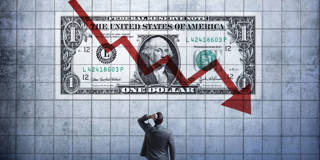Far from signaling its imminent demise as the main global reserve currency, the greenback's sharp depreciation is to be expected in the current macroeconomic context. The forces that could erode the dollar's hegemony remain slower-moving and farther off.
NEW YORK – The recent sharp depreciation of the US dollar has led to concerns that it may lose its role as the main global reserve currency. After all, in addition to the US Federal Reserve’s aggressive monetary easing – which threatens to debase the world’s key fiat currency even further – gold prices and inflation expectations have also been rising.
But, to paraphrase Mark Twain, reports of the dollar’s early demise are greatly exaggerated. The greenback’s recent weakness is driven by shorter-term cyclical factors. In the long run, the situation is more complicated: the dollar has both strengths and weaknesses that may or may not undermine its global position over time.
Chief among the short-term negative factors is the Fed’s ultra-loose monetary policy. With the United States monetizing ever-larger budget deficits, the Fed’s approach looks more accommodative than that of most other major central banks.

NEW YORK – The recent sharp depreciation of the US dollar has led to concerns that it may lose its role as the main global reserve currency. After all, in addition to the US Federal Reserve’s aggressive monetary easing – which threatens to debase the world’s key fiat currency even further – gold prices and inflation expectations have also been rising.
But, to paraphrase Mark Twain, reports of the dollar’s early demise are greatly exaggerated. The greenback’s recent weakness is driven by shorter-term cyclical factors. In the long run, the situation is more complicated: the dollar has both strengths and weaknesses that may or may not undermine its global position over time.
Chief among the short-term negative factors is the Fed’s ultra-loose monetary policy. With the United States monetizing ever-larger budget deficits, the Fed’s approach looks more accommodative than that of most other major central banks.